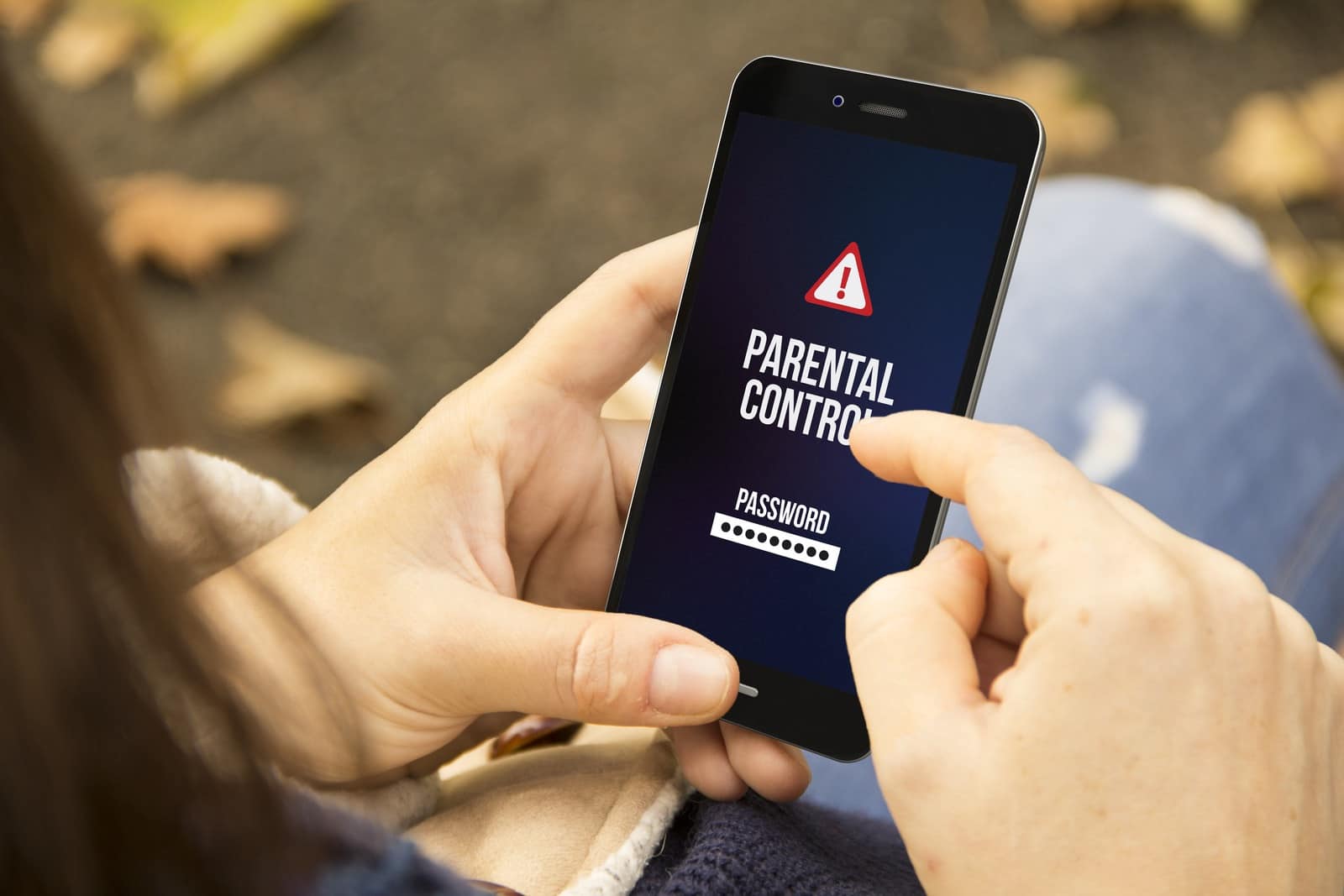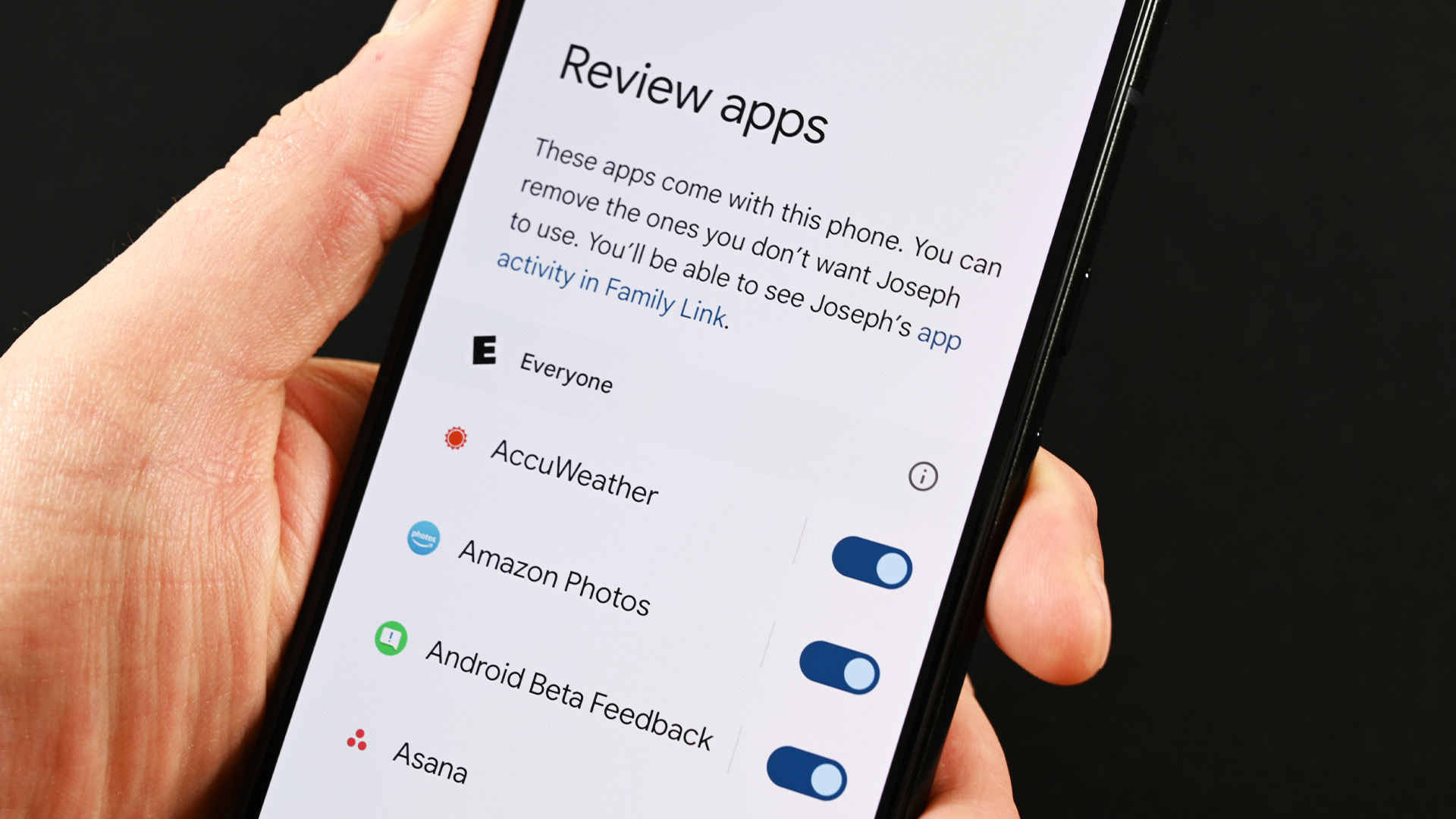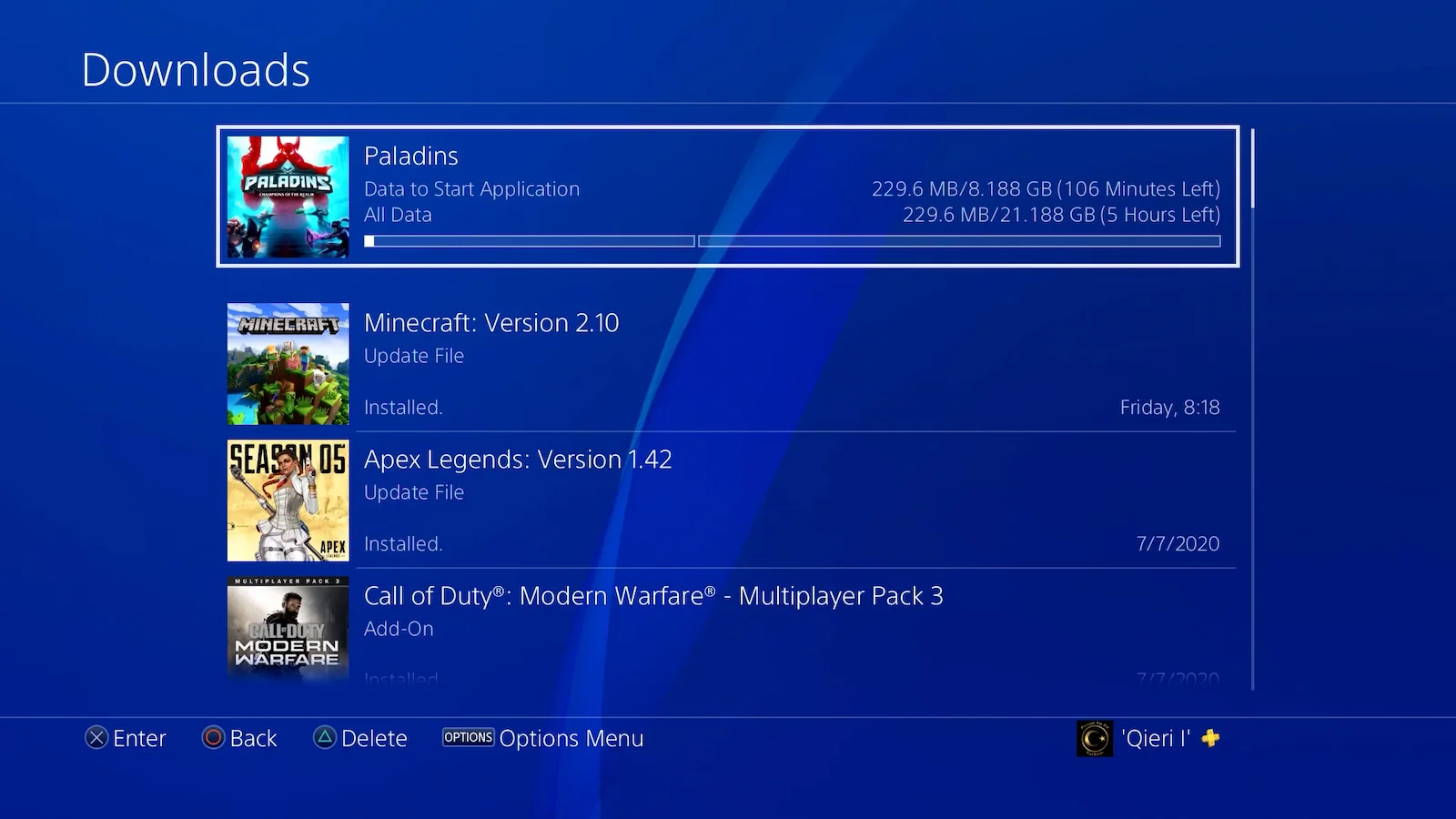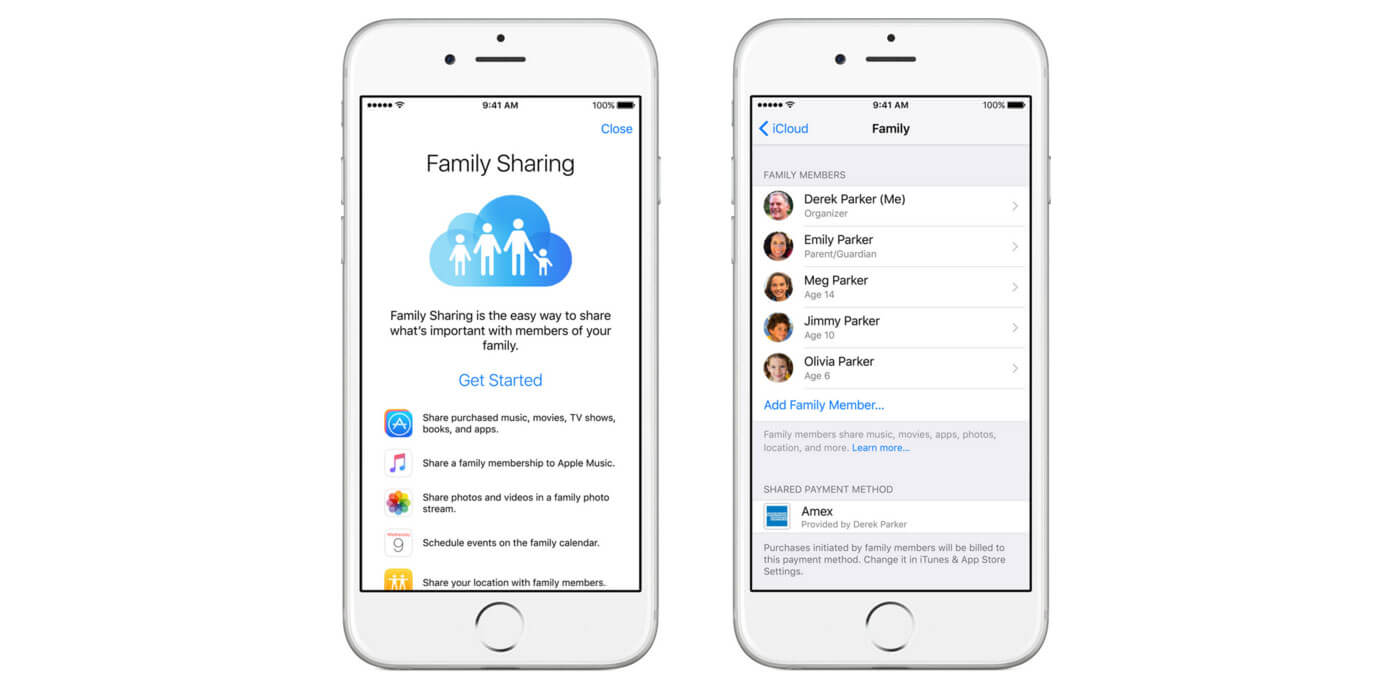Introduction
As parents in the digital age, it’s essential to ensure that our children have a safe and age-appropriate online experience. With the multitude of apps available for download, it can be overwhelming to keep track of what our kids are accessing on their devices. This is where parental controls come in.
Parental controls are a valuable tool that allows parents to monitor and restrict the content their children can access on smartphones, tablets, and computers. By implementing these controls, parents can have peace of mind knowing that their kids are browsing, downloading, and using apps that are suitable for their age range.
But why should parents use parental controls specifically for downloading apps? The answer is simple. In today’s digital landscape, apps have become an integral part of our daily lives, offering a wide range of functionalities, from educational tools to entertainment and social media platforms. However, not all apps are suitable for children, and without proper supervision, they may inadvertently stumble upon content that is not age-appropriate.
Parental controls provide a protective barrier, giving parents the ability to filter and select the apps that align with their values and desired level of content exposure for their children. Whether it’s age restrictions, blocking specific categories, or requiring a passcode for app downloads, these controls give parents the power to curate a safe digital environment for their kids.
In this article, we will guide you through the process of setting up parental controls on different devices, including iOS, Android, Windows, and Mac. We will also provide some valuable tips on how to make the most out of parental controls and ensure your child’s online safety.
What are Parental Controls?
Parental controls are tools and features integrated into digital devices and software applications that allow parents to monitor, regulate, and restrict the content and activities their children can access. These controls are designed to provide an extra layer of protection and help parents create a safe and secure online environment for their kids.
With parental controls, parents can set limits on various aspects of their children’s digital usage, including web browsing, app downloads, social media access, screen time, and more. By customizing these controls, parents can ensure that their children are exposed to age-appropriate content and are protected from potential online dangers.
There are several key features and functionalities that parental controls offer:
- Content filtering: Parents can block or filter specific websites, apps, or types of content that they deem inappropriate for their children. This feature helps in preventing access to explicit or violent material, gambling sites, or adult-oriented content.
- App restrictions: Parental controls allow parents to manage app downloads and usage. They can set restrictions on specific apps based on age ratings, block certain categories of apps, or require approval before any new app is downloaded.
- Screen time management: Parents can set limits on the amount of time their children can spend on digital devices. This feature helps prevent excessive screen time and promotes a healthy balance between online and offline activities.
- Privacy settings: Parental controls enable parents to control the privacy settings of their children’s accounts, including restricting who can contact them, accessing their location information, or sharing personal data.
- Activity monitoring: Parents can track their children’s online activities, such as websites visited, search history, or app usage. This monitoring feature allows parents to identify any potential online risks or inappropriate behavior.
It’s important to note that parental controls are not foolproof, and no single solution can replace open communication and active parenting. However, they serve as a valuable tool to aid parents in managing and guiding their children’s digital experiences. By utilizing these controls, parents can strike a balance between allowing their children to explore the digital world while still ensuring their safety and well-being.
Why Use Parental Controls to Download Apps?
The digital landscape is filled with a vast array of apps that cater to every interest and need imaginable. While many apps are beneficial and educational, there are also apps that may contain inappropriate content or pose potential risks to children. This is why utilizing parental controls to regulate app downloads is crucial for the safety and well-being of our kids.
Here are some key reasons why parents should use parental controls specifically when it comes to downloading apps:
- Age-appropriate content: Not all apps are suitable for all age groups. Parental controls allow parents to set age restrictions and filter out apps that may contain explicit, violent, or inappropriate content for their children’s age range.
- Protection from harmful apps: The internet is home to various apps that may not have the best intentions or may be designed for malicious purposes. Parental controls can help block or warn against downloading potentially harmful apps such as malware, spyware, or apps that infringe on privacy.
- Control over in-app purchases: Many apps offer in-app purchases, which can quickly add up and result in unexpected charges. Parental controls allow parents to disable or set restrictions on in-app purchases to prevent overspending or unauthorized purchases.
- Prevention of addiction and excessive screen time: Some apps, particularly social media or gaming apps, can be highly addictive and may contribute to excessive screen time. By using parental controls, parents can set limits on app usage and help their children maintain a healthy balance between online activities and other aspects of their lives.
- Building digital literacy skills: Parental controls offer an opportunity for parents to engage in conversations with their children about responsible app usage. By discussing the reasons behind app restrictions and involving children in the decision-making process, parents can guide their children to become responsible digital citizens.
Parental controls serve as a valuable tool in empowering parents to have greater control over the apps their children download and use. They provide a sense of security, allowing parents to feel confident that the apps their children are accessing align with their values and promote a safe and enriching online experience.
By utilizing parental controls, parents can create an environment that fosters responsible digital behavior while protecting their children from potential online risks and creating a balance between technology use and other aspects of their lives.
Setting Up Parental Controls on iOS Devices
iOS devices, such as iPhones and iPads, offer robust parental control features that allow parents to monitor and manage their children’s app downloads effectively. Setting up parental controls on iOS devices is a straightforward process:
- Open the “Settings” app on your iOS device.
- Tap on your name at the top of the Settings menu to access your Apple ID settings.
- Choose “Family Sharing” and then tap on “Screen Time.”
- If you have not set up Screen Time before, tap on “Turn on Screen Time.” If you have already set it up, skip to the next step.
- Tap on “Continue” and then select “This is My [device]” or “This is My Child’s [device]” for the device you are setting up.
- Follow the prompts to set a Screen Time passcode, which will be used to restrict and manage app downloads.
- Once Screen Time is set up, go back to the main Screen Time menu and tap on “Content & Privacy Restrictions.”
- Toggle the switch for “Content & Privacy Restrictions” to enable it.
- Explore the various options available under “Allowed Apps” and “Content Restrictions.” You can customize these settings according to your preferences and your child’s age.
- Under “iTunes & App Store Purchases,” you can choose to allow or disallow app downloads, in-app purchases, or age restrictions for app downloads.
- Exit the Settings app, and your parental controls will be active.
With these parental controls enabled on iOS devices, parents can now confidently regulate the app downloads and other content their children can access on their iPhones and iPads. Remember to regularly review and update these settings as your child grows older and their digital needs evolve.
Setting Up Parental Controls on Android Devices
Android devices provide a range of options for parents to set up parental controls and manage app downloads effectively. Here’s how you can set up parental controls on Android devices:
- Open the Google Play Store app on the Android device.
- Tap on the three horizontal lines at the top-left corner to open the menu.
- Scroll down and tap on “Settings.”
- Under “User controls,” tap on “Parental controls.”
- Toggle the switch to enable parental controls.
- Create a PIN that will be used to access and modify the parental control settings.
- Tap on “Apps & games” and set the content restrictions based on the maturity level you desire for your child.
- Explore the other options available, such as blocking specific categories of apps or requiring authentication for in-app purchases.
- Exit the settings, and the parental controls will now be active.
In addition to the built-in parental controls on Android devices, you can also explore using third-party apps from the Google Play Store that provide more advanced or specific features for parental control. These apps may offer additional functionalities such as app usage monitoring, time limits, and more.
By setting up parental controls on Android devices, parents can have better control over the app downloads their children can access, ensuring a safer and age-appropriate digital experience.
Setting Up Parental Controls on Windows Devices
Windows devices, including computers and laptops, offer a range of parental control features that allow parents to manage and restrict app downloads effectively. Here’s how you can set up parental controls on Windows devices:
- Open the Start menu and click on “Settings.”
- In the Settings menu, select “Accounts.”
- Click on “Family & other users” on the left-hand side.
- Under the “Your family” section, click on “Add a family member.”
- Follow the prompts to add a child account to your family.
- Once the child account is added, click on “Manage family settings online.”
- Sign in with your Microsoft account credentials.
- Under the child’s account settings, click on “App & game limits.”
- Toggle the switch to enable app and game limits.
- Choose the child’s age range or manually select the appropriateness of content.
- Customize the time limits and restrictions according to your preferences.
- Save the changes, and the parental controls will become active on the Windows device.
With these parental controls enabled on Windows devices, parents can have peace of mind knowing that they have control over the app downloads their children can access. Additionally, Windows also provides other options for managing and monitoring screen time, website restrictions, and more, giving parents a comprehensive range of tools to create a safe and secure digital environment for their children.
Setting Up Parental Controls on Mac Devices
Mac devices offer robust parental control features that allow parents to monitor and regulate app downloads effectively. Here’s how you can set up parental controls on Mac devices:
- Open the Apple menu and click on “System Preferences.”
- In the System Preferences menu, click on “Parental Controls.”
- Click on the lock icon at the bottom left corner and enter your administrator password to make changes.
- Select the user account for which you want to set up parental controls.
- In the Parental Controls tab, click on the “Apps” tab.
- Enable the checkbox that says “Limit Applications.”
- Customize the list of allowed apps by checking or unchecking the boxes next to each app.
- Click on the “Web” tab to set up web content restrictions and browsing limits.
- Choose from the various options to block specific websites, allow access to only approved websites, or set time limits for web browsing.
- Explore other settings such as time limits, privacy options, and game restrictions as per your preference.
- Close the parent controls settings, and the changes will take effect immediately.
With parental controls enabled on Mac devices, parents can effectively manage the app downloads and content access for their children. Additionally, Mac devices also offer features such as screen time limits, activity monitoring, and privacy settings, providing comprehensive tools for parents to create a safe and controlled digital environment for their kids.
Tips for Using Parental Controls Effectively
Parental controls are a powerful tool for ensuring the safety and appropriate usage of digital devices and apps for children. To maximize their effectiveness, consider the following tips:
- Regularly reassess and update settings: As your child grows, their digital needs and maturity levels may change. It’s important to review and update your parental control settings regularly to ensure they are appropriate and effective.
- Communicate with your child: Explain to your child the reasons behind using parental controls and involve them in the decision-making process. Encourage open communication about responsible digital behavior and teach them about online safety.
- Set realistic boundaries: While it’s important to protect your child, it’s also essential to allow them some freedom and independence. Find a balance between setting restrictions and giving them age-appropriate digital privileges.
- Stay informed about new apps and technologies: The digital landscape is constantly evolving with new apps and platforms. Stay up to date with the latest trends and technologies to better understand and manage your child’s digital experiences.
- Encourage offline activities: While parental controls help manage digital usage, it’s crucial to encourage a healthy balance between online and offline activities. Provide opportunities for physical exercise, creative hobbies, and face-to-face interactions.
- Lead by example: Children often mimic the behavior of their parents. Model responsible digital behavior by limiting your own screen time, practicing online safety, and demonstrating healthy tech habits.
- Regularly discuss online safety: Talk to your child about online threats such as cyberbullying, grooming, and scams. Reinforce the importance of not sharing personal information online and encourage them to report any suspicious activities.
- Be flexible and adaptable: As your child grows older, their digital needs and interests will change. Be willing to adjust your parental control settings accordingly and engage in ongoing conversations about responsible digital citizenship.
Remember, parental controls are not a substitute for active parenting and open communication. They are tools to support your efforts in creating a safe and positive digital environment for your children. By combining parental controls with education, guidance, and open dialogue, you can help your child navigate the digital world responsibly.
Conclusion
Parental controls play a vital role in ensuring the safety and well-being of children in the digital age. With the wide availability of apps and the ever-evolving digital landscape, it is crucial for parents to utilize these controls to manage and regulate app downloads effectively.
By setting up parental controls on different devices such as iOS, Android, Windows, and Mac, parents can have peace of mind knowing that they have the tools to create a safe and age-appropriate digital environment for their children. These controls allow parents to filter content, set age restrictions, manage screen time, and much more, ensuring that their children are accessing apps that align with their values and promoting responsible digital behavior.
However, it’s important to note that parental controls are not a substitute for active parenting and open communication. It is essential for parents to engage in ongoing conversations with their children about responsible digital citizenship, online safety, and the reasons behind implementing these controls. By combining parental controls with education, guidance, and regular discussions, parents can empower their children to navigate the digital world responsibly.
Remember to reassess and update settings regularly as your child grows and their digital needs evolve. Stay informed about new apps and technologies, lead by example, and encourage a healthy balance between online and offline activities. By following these tips and utilizing parental controls effectively, parents can provide a safe and enriching online experience for their children.
With parental controls in place, parents can confidently allow their children to explore and benefit from the vast array of apps available while ensuring their well-being and protection in the digital world.

























